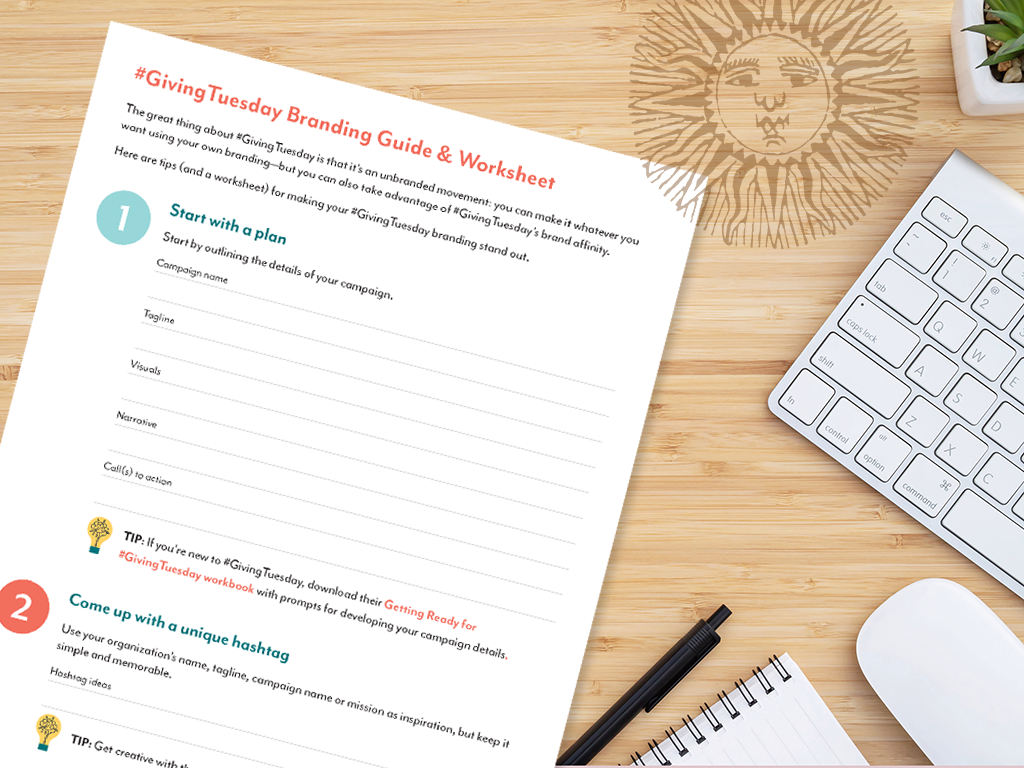
Now that you’ve outlined your goals and strategy, created a brand guide and developed your story, it’s time to launch your GivingTuesday campaign on social media.
With 29% of online donors saying that social media is the communication tool that most inspires them to give, you don’t want to ignore this aspect of your campaign.
First, let’s go back to my post that mentions the 4 characteristics of an effective GivingTuesday campaign and see how it applies to social media:
Nonprofits gain 4X the number of new donors on GivingTuesday than they do on a typical day.
Classy
You can’t expect success from a social media campaign if you don’t have a plan. Using your overall GivingTuesday campaign strategy as a reference, create a social media strategy that includes the following:
Remember that each social media outlet may have a different goal and audience, so you’ll want to consider each and tailor your content accordingly.
For example, 39% of millennials worldwide are inspired to give because of what they saw on social media, so you may focus on Instagram for that audience. And over half of LinkedIn users report donating to charities, so that outlet may be useful for targeting organization leaders or business professionals.
For a social media campaign to be effective, it has to resonate with your followers. One way to do this is to be very focused. Instead of sharing miscellaneous content, tell one singular story from different points of view throughout your campaign.
TIP: Creating a campaign focused on one story related to your mission also means you will end up with content that can be reused throughout the year.
In order to make it easier for everyone to spread the word on social media, it’s helpful to create a simple media kit.
Gather campaign-related images, videos, logos and other graphics. Then create a document with sample pre-written posts to cut and paste for each social media outlet. File everything in a shared folder that can be easily accessed by your team, freelancers, or ambassadors.
Did you create a GivingTuesday brand guide? Great news! Include that in the media kit so that your branding will be consistent throughout the campaign.
Social media is well, social, so get as many people involved as you can. Consider featuring your organization’s leader or the team member leading the campaign through stories and images. And of course, encourage your team to share the campaign with their personal networks.
If you have supporters who regularly share your posts or mention your organization in their posts—turn them into social media ambassadors. As nonprofit social media marketer Julia Campbell says in her guide to coordinating social media ambassadors on GivingTuesday, this “group of passionate and inspiring people who want to spread the word about your cause and raise money for you” is your greatest asset.

Photo by GivingTuesday on Pexels
Are there like-minded organizations or groups—locally or nationally—that you can partner with on your campaign? By cross-posting content or participating in an Instagram takeover, both organizations can expand their reach.
And don’t limit yourself to fellow nonprofits. Small businesses, especially local businesses, can be great collaborators as they prepare for Small Business Saturday (the Saturday before GivingTuesday).
Organizations often struggle with social media because of a lack of time or resources. A strategy I recommend is to block out a few hours to write and schedule a month’s worth of campaign posts. You can still share and post spontaneously throughout the month, but this way you’ll have a steady stream of posts and maintain consistency in your campaign.
Another way to save time is to use a content calendar to track current and upcoming posts. It can be as simple as a spreadsheet or you can use an app like Trello, which has useful content calendar templates.
TIP: Many social media schedulers and other tools have nonprofit discounts—see my list of 15+ Low-Cost Social Media, Content & Email Marketing Resources for Nonprofits.
Don’t lead with the ask. Make sure your social media content is evenly distributed between information, education, stories, and conversations—then the request for a donation.
Also, remember that people may want to donate in ways other than money, so consider highlighting non-monetary ways to get involved in your GivingTuesday campaign, such as board or volunteer opportunities or wish lists of goods and services.
Show followers the impact your organization is making, and show them why you are passionate about your mission. Give them enough background so that when they do see your ask, they will be inspired to give.
As the GivingTuesday Learning Lab Facebook page branding expert, I often hear people struggling to find ideas for their GivingTuesday campaign. One of the best ways to get inspired is to see what others are doing.
Observe how other organizations are using social media in their campaigns—specifically, techniques you may not have considered such as Instagram Stories, Facebook Live, or a Q&A session or live interview.
A GivingTuesday hashtag search will provide lots of examples, or you can browse GivingTuesday’s Giving Stories for examples from nonprofits, foundations, higher education, schools, and more.
P.S. Be inspired, but please don’t copy!
Social media drives 57% of traffic to fundraising campaign pages.
Classy
Make your next campaign stand out! Get my free GivingTuesday Branding Guide & Worksheet that includes tips, worksheets and templates.
